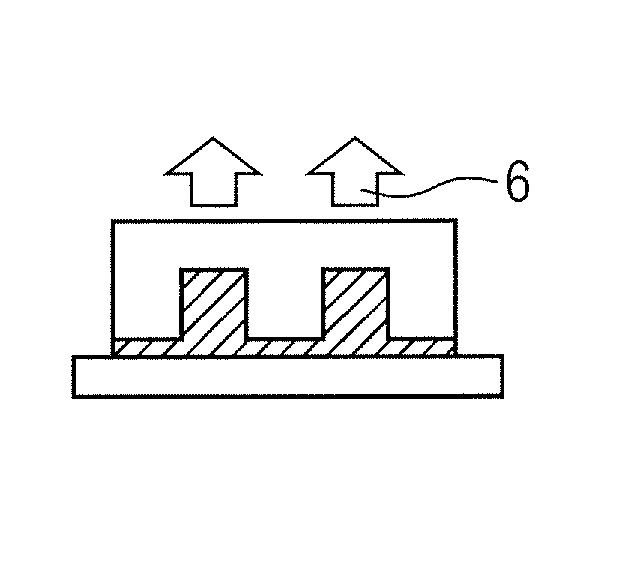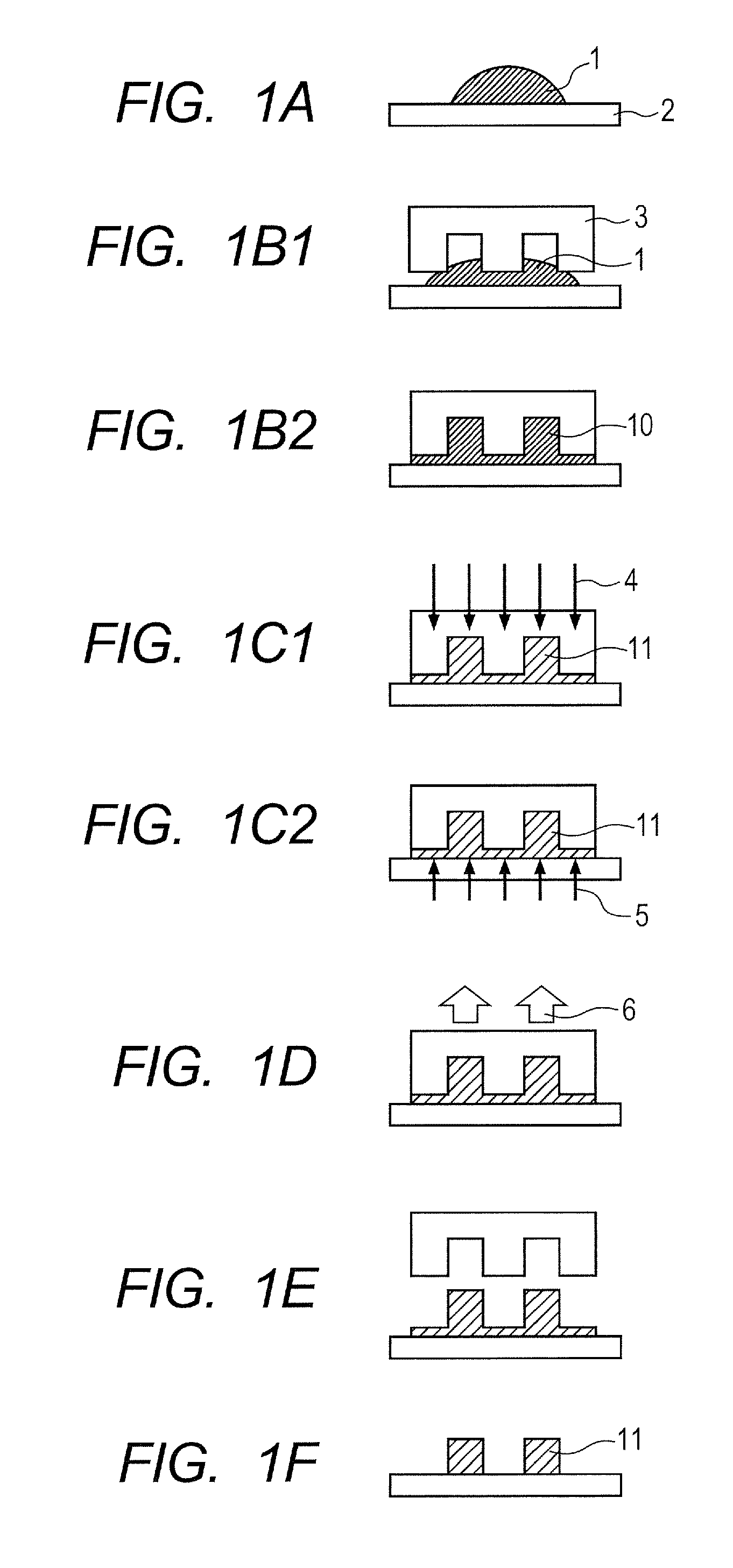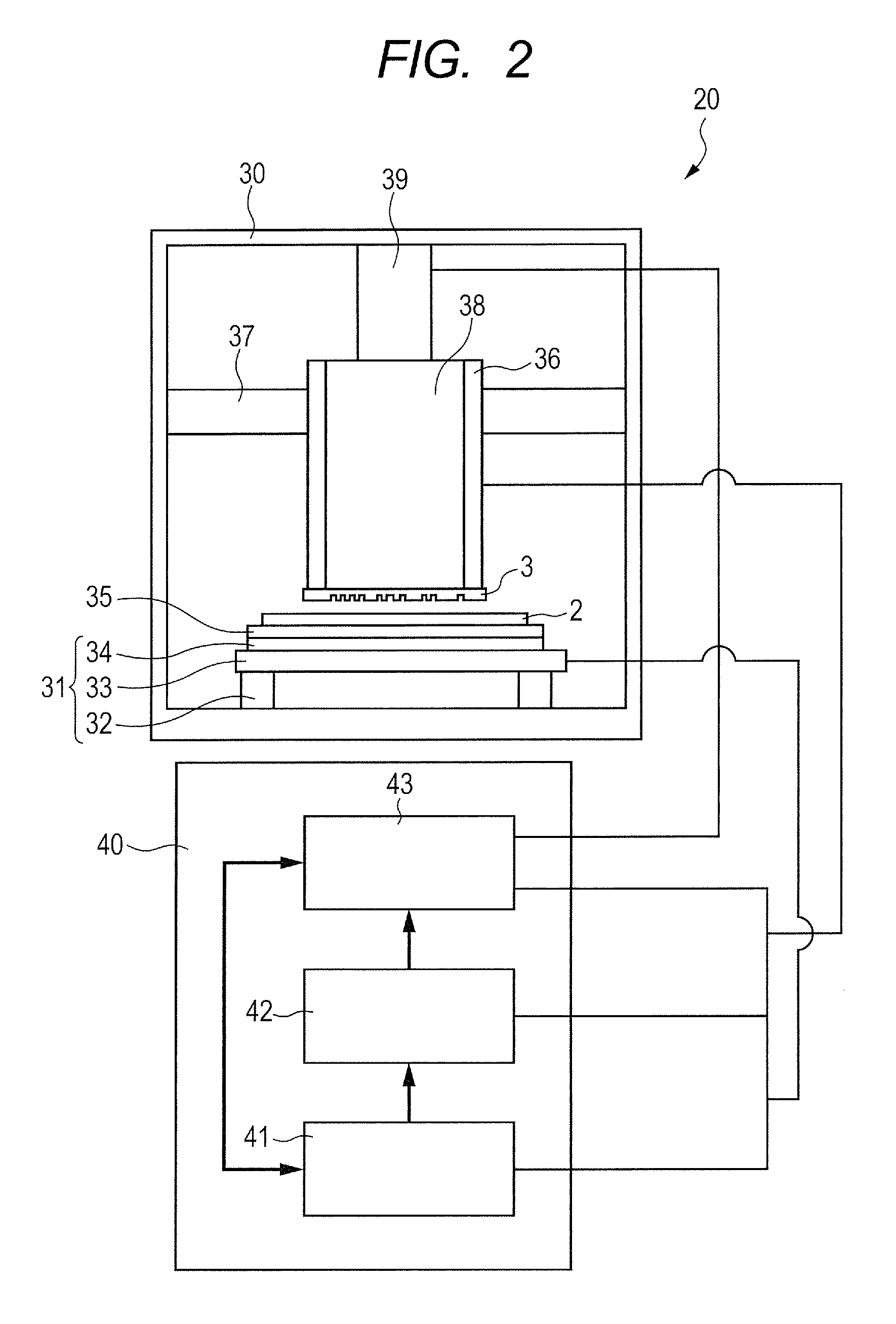Resin production method and resin production apparatus
a resin production method and resin technology, applied in the field of resin production methods, can solve the problems of large mold release force, pattern defects, and photolithography technology also coming close to a limi
- Summary
- Abstract
- Description
- Claims
- Application Information
AI Technical Summary
Benefits of technology
Problems solved by technology
Method used
Image
Examples
example 1
(1) Curable Composition (Radiation Curable Composition)
[0127]A curable composition (radiation curable composition) was prepared by mixing reagents shown below and a solvent.[0128][0129]trimethylolpropane triacrylate (manufactured by TOAGOSEI CO., LTD.): 100 parts[0130]Dar.1173 (manufactured by Ciba Japan): 3 parts[0131]2,2′-azobis-(N-butyl-2-methylpropioneamide) (trade name: VAm-110, manufactured by Wako Pure Chemical Industries, Ltd.): 15 parts[0132](Note 1) a polyfunctional (meth)acrylic compound having two or more methacryloyl groups[0133](Note 2) a gas generating agent producing gas with light
(2) Resin Production Method
[0134]First, the curable composition prepared as described above was applied to a silicon glass of 100 mm2. Then, a quartz glass (mold having no pattern) of 100 mm2 was held in parallel with the silicon glass, and the curable composition and the quartz glass were brought into contact with each other. In this case, the thickness of a film made of the curable compos...
example 2
[0135]A resin was produced by the same method as that of Example 1 except that the quartz glass was moved appropriately in a direction of increasing the relative distance between the silicon glass and the quartz glass so that a tensile stress became 0.177 N / mm2 in Example 1. Further, a mold release force was measured in the same way as in Example 1. Table 1 shows the results.
example 3
[0136]A resin was produced by the same method as that of Example 1 except that the quartz glass was moved appropriately in a direction of increasing the relative distance between the silicon glass and the quartz glass so that a tensile stress became 0.035 N / mm2 in Example 1. Further, a mold release force was measured in the same way as in Example 1. Table 1 shows the results.
PUM
| Property | Measurement | Unit |
|---|---|---|
| tensile stress | aaaaa | aaaaa |
| size | aaaaa | aaaaa |
| size | aaaaa | aaaaa |
Abstract
Description
Claims
Application Information
 Login to View More
Login to View More - R&D
- Intellectual Property
- Life Sciences
- Materials
- Tech Scout
- Unparalleled Data Quality
- Higher Quality Content
- 60% Fewer Hallucinations
Browse by: Latest US Patents, China's latest patents, Technical Efficacy Thesaurus, Application Domain, Technology Topic, Popular Technical Reports.
© 2025 PatSnap. All rights reserved.Legal|Privacy policy|Modern Slavery Act Transparency Statement|Sitemap|About US| Contact US: help@patsnap.com



